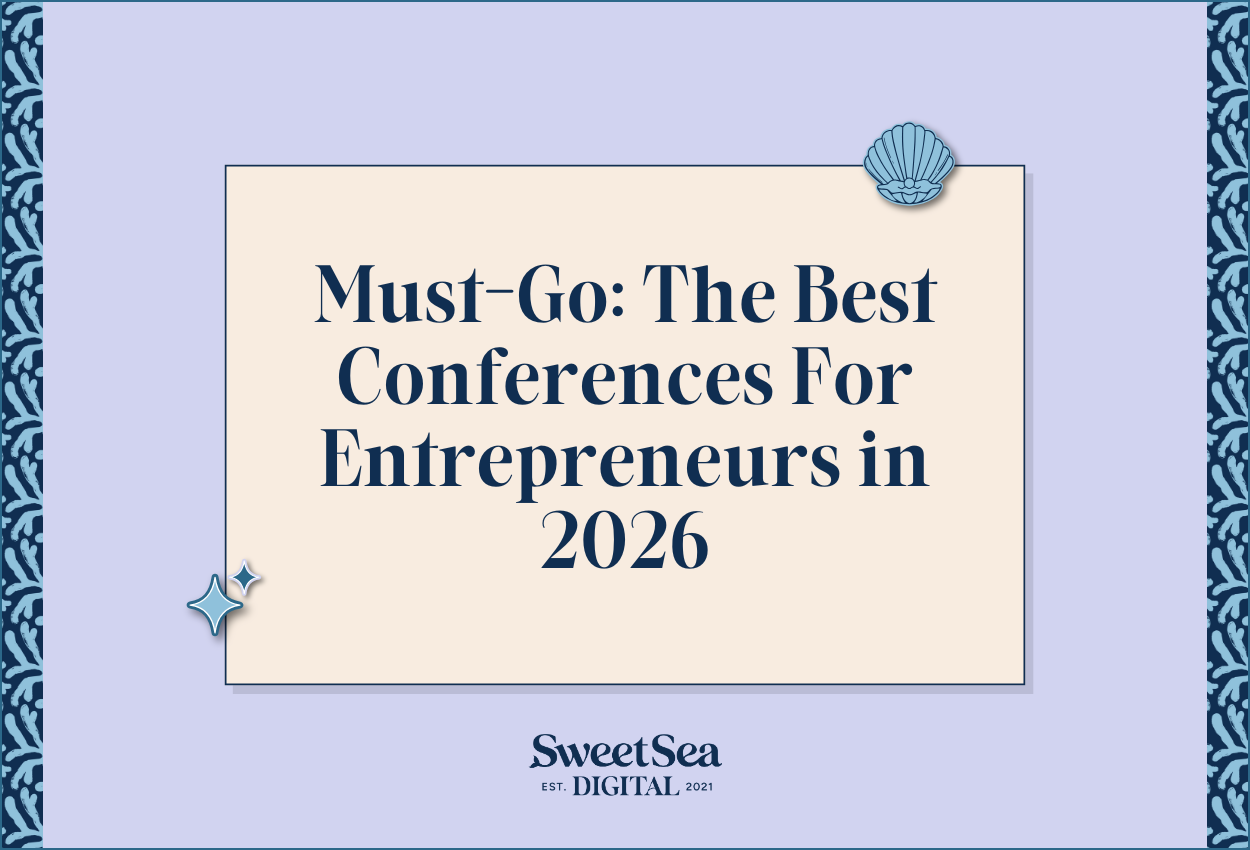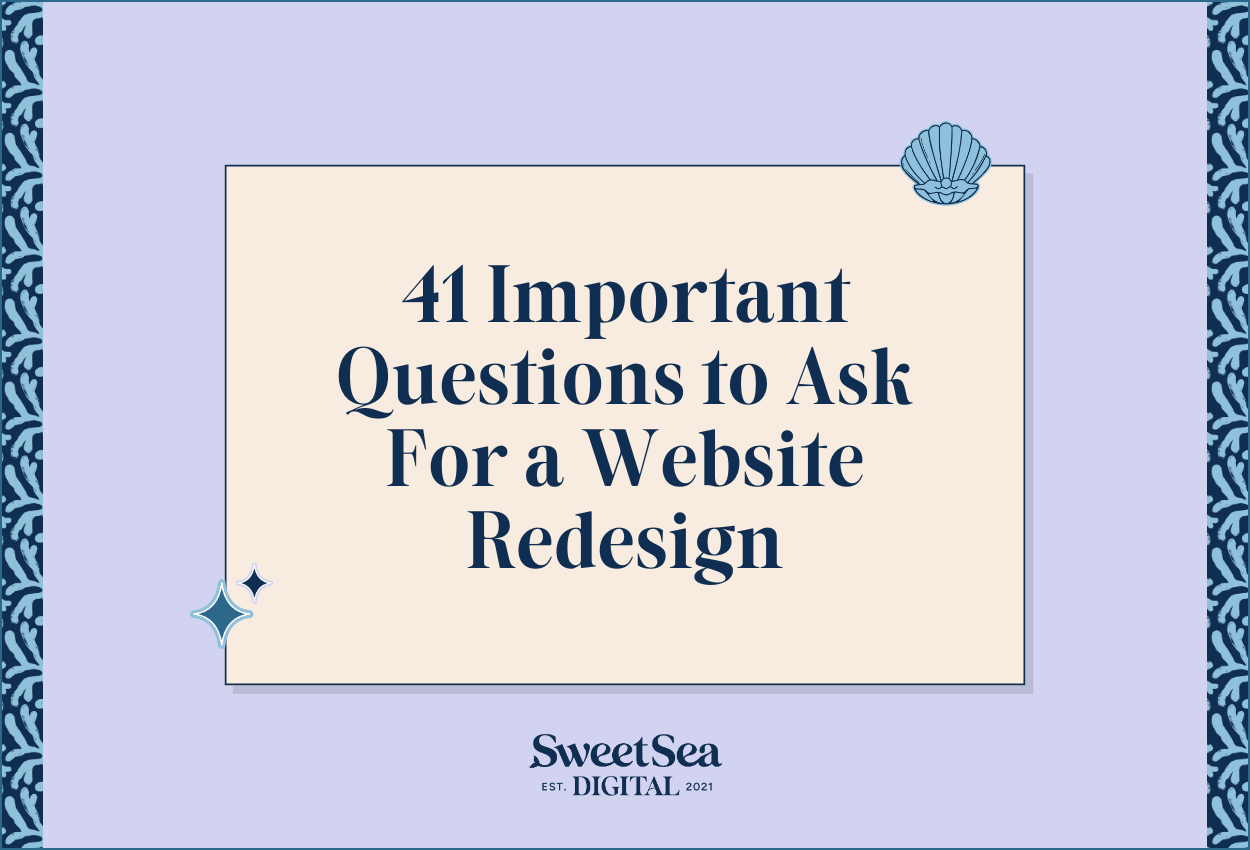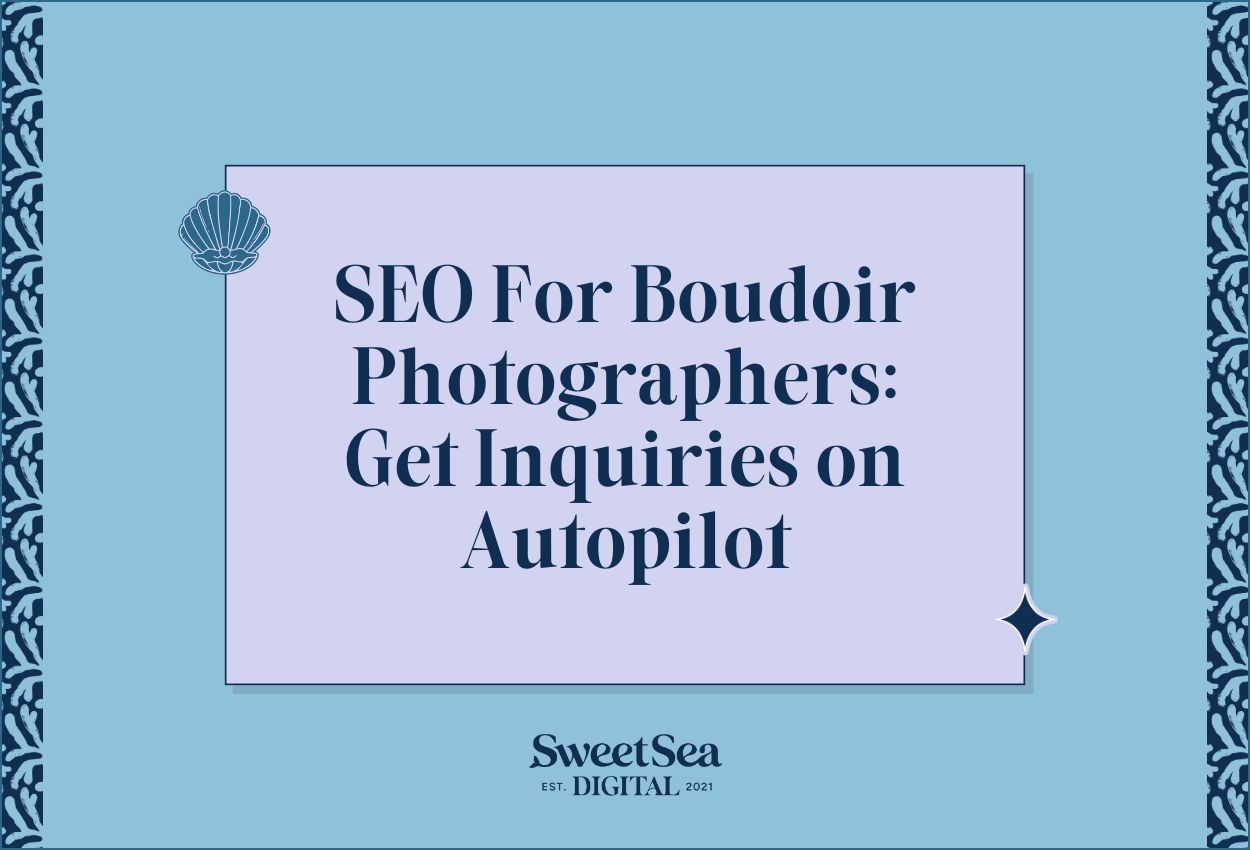SEO For Florists: Become Your City’s #1 (2026)
By Seren Nurgun,
Founder of SweetSea Digital
By Seren Nurgun
Jul 3, 2025
Salt Your SEO:
Kickstart Your SEO With These 5 Easy Steps!
Ever feel like your floral business isn’t getting the recognition it deserves, adrift in a sea of your city’s floral shops? That’s where search engine optimization for florists comes into play. Instead of depending on word-of-mouth, social media, or foot traffic, good SEO gets your business found 24/7 on autopilot.
How, exactly? There’s always people needing flowers and, unless they already have a favorite shop, those people are searching online for where to get what they need. By showing up as one of the top options in your city, more people end up buying from you! It’s actually that simple.
You may ask why focus on such technical stuff when all you want is to arrange beautiful bouquets? And to that I say don’t forget that even beautiful roses need rich soil to grow into their potential!
What is SEO for Florists?
There’s no denying the potency of SEO for florists and floral designers. As the U.S. floral industry continues to grow every year and is projected to generate about $8.9 billion in annual revenue in 2025, getting your flower shop noticed online is crucial. If you’re not utilizing SEO, you’re no doubt leaving money on the table.
Search engine optimization (SEO) is a set of unpaid tactics done to make websites rank higher on Google, Bing, and other search engines for specific keywords that potential flower buyers are using to look for businesses like yours (like ‘wedding flowers boston’, ‘rose bouquet dallas’, or ‘marriage proposal flowers las vegas’). When people need flowers for an occasion or are looking for a local florist or floral designer, they often turn first to Google.
And if you’re not on that 1st page of search results, then you may as well be invisible online.SEO is different from paid ads because you don’t need to pay to rank highly – it just takes those tactics I mentioned earlier. With more than 41,000 florists competing in the United States alone, having an effective SEO strategy can set your business apart from others in your city. Especially because most florists and floral designers haven’t even heard of SEO! You’re already ahead!
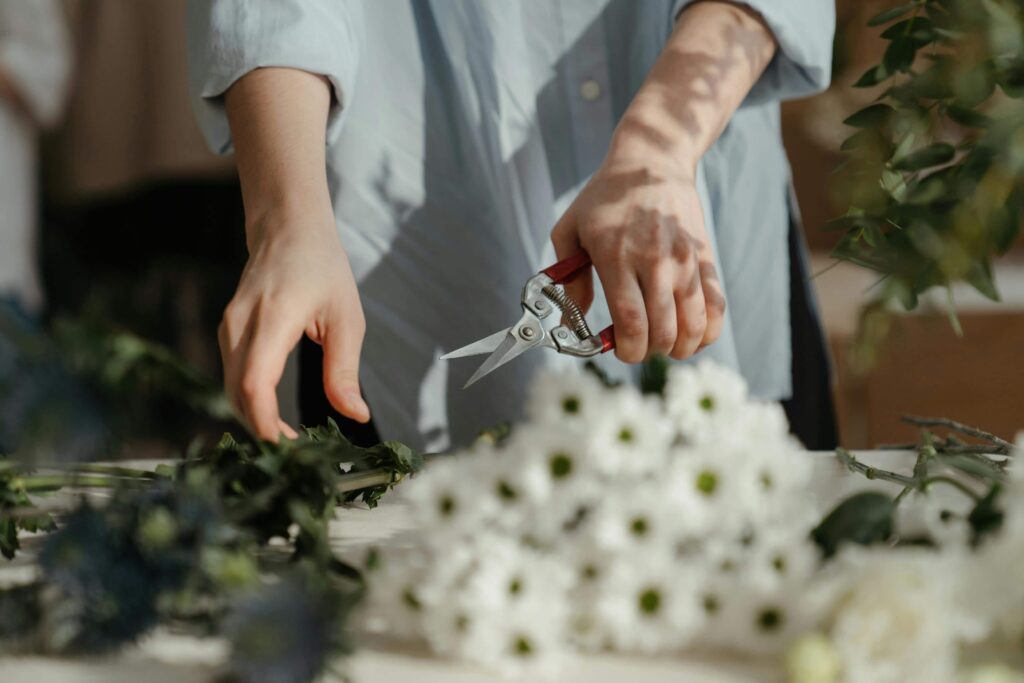
Starting SEO from Scratch
The world of SEO can seem daunting, but let’s simplify it. We’ll start by diving into the bread and butter of SEO: keyword research.
Importance of Keyword Research
To rank higher in search engine results, we need to understand what potential dream clients are searching for. Identifying relevant keywords is crucial here. Metadata optimization (hold on, stay with me now!), a key part of an effective SEO strategy, heavily relies on this understanding.
As a florist or floral designer aiming to boost your online visibility, you should think about questions prospective clients might ask Google. ‘Florist [city]’ or perhaps ‘affordable peony bouquet’. These queries hint at valuable (i.e. profitable!) keywords that could guide your foundational SEO plus your blog post strategy.
Metadata Optimization
Title tags, meta descriptions, and alt text aren’t just technical jargon – they’re all pieces of the puzzle. Depending on your website platform, these might have different names. For example, on Squarespace, title tags are called SEO Titles. To find what your platform calls title tags and meta descriptions, you can just Google: [website platform] title tags and meta descriptions.
This metadata tells search engines like Google what your site is all about. Well-crafted metadata can significantly improve how many people click on your pages on search results as well as give your florist or floral designer website an edge over local competitors.
As a florist or floral designer be sure to include the name of the city where you’re located somewhere in your title tags. This is a super strong hint to Google to rank you in your city!
For meta descriptions, these are 155 character or less notes that don’t affect where you rank, and instead affect whether or not someone clicks on your page or not. You’ll want to think of these more as copy (sales-oriented language) than as content (informative-oriented language).
Funny Thought: Imagine someone reading only the blurb on a book cover without knowing anything else about it; if it’s not compelling enough, would they give the book a chance? Probably not. That’s precisely how important metadata is for attracting visitors to your site.
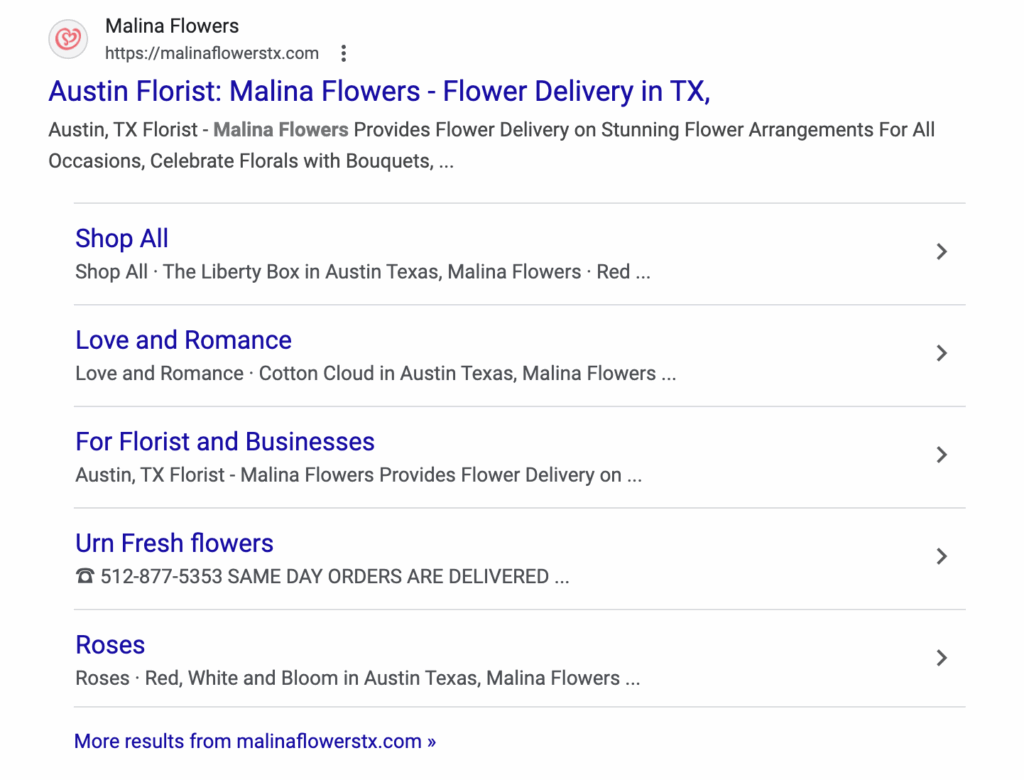
Internal Page Linking
Internal page linking is when pages on your website include links to other pages on your website. Like on your homepage where you probably link to a portfolio page, a services page, maybe a testimonials page, and a contact page.
Each page on your website should at least have one link to another page on your website, ideally at least three links. Because your homepage is the MOST important page on your website (to Google, too), this page should have links to all of your main pages and a couple of your blog posts (your most strategic ones).
These internal links tell Google that these linked-to pages are important. Studies have shown that the better your internal linking is, in general the better your SEO will be.
When it comes to internal page linking, studies have also shown that the words you hyperlink matter. For example, it’s much better for a call-to-action button to say ‘book your wedding flowers’ than to say ‘see more’. Links should have contextual words, so that Google can better understand where that link leads to.
Local SEO for Florists & Floral Designers
As a florist or floral designer, you’re likely focused on crafting beautiful floral arrangements (rightfully so!). But if you haven’t yet considered the power of building citations to enhance your local search rankings, I’m sorry to say you’re missing out. Google loves when your business information is consistent and widespread across various platforms.
Citations are mentions of your florist or floral designing business’s name, address, and phone number (otherwise known as N.A.P.) on other web pages across the internet. This could be directories like Yelp or Yellow Pages, social media profiles, or even in a roundup post by a wedding blogger. A citation doesn’t need to link back to your website to provide value; it’s mainly about visibility.
To start creating citations, make sure that all N.A.P. details are accurate and up-to-date on both your website and Google Business Profile. Then look for reputable websites where you can list these details – think industry-specific sites and directories. Cover the general main ones, but also get yourself on as many niche-specific ones as possible (paid or unpaid).
Florists and floral designers often forget this simple yet effective SEO move. However, consistently investing time into building quality citations will help improve how Google ranks you locally in its search results.
Creating & Optimizing a Google Business Profile
Having an optimized Google Business Profile can be a florist or floral designer’s attractive digital storefront. It helps potential clients find your business in local search results; 86% of customers use Google Maps to locate a business nearby.
The first step is simple: visit the Google My Business homepage. Click on ‘Manage Now’. Sign in to your Google account or create one if necessary.
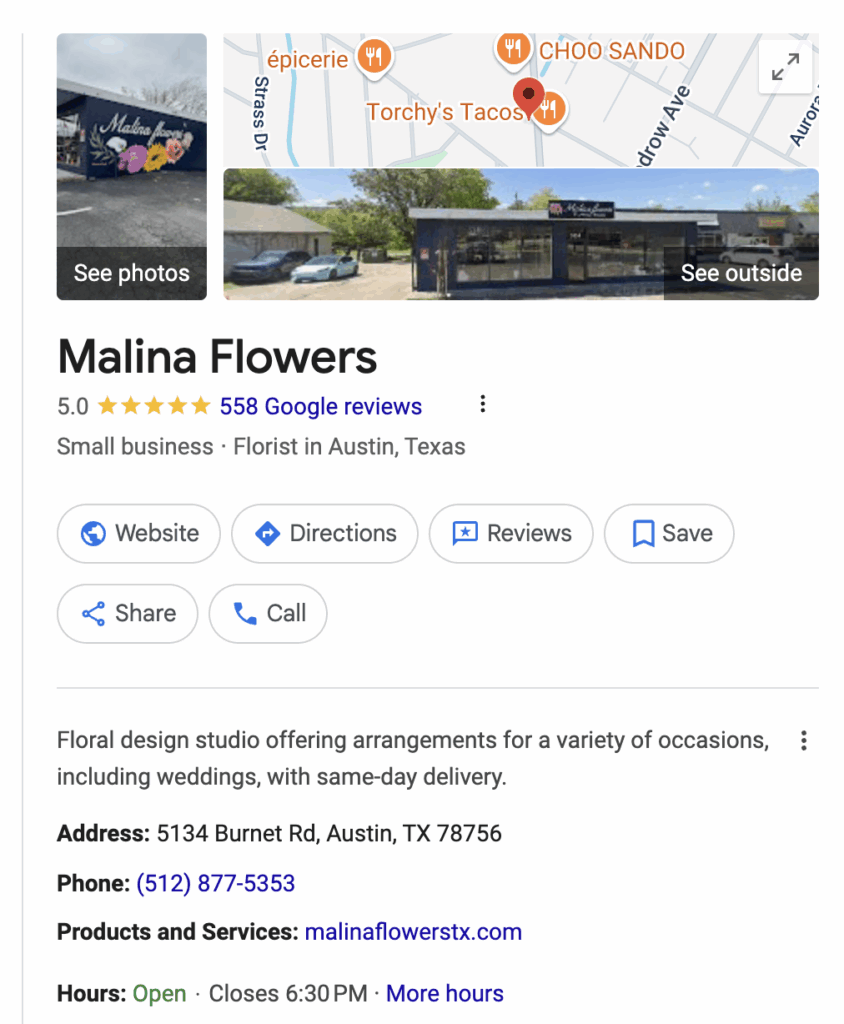
Filling Out Your Information
Your profile needs as much information about your florist or floral designer business as possible. Be sure to include details such as hours of operation, contact information, your website URL, and additional details like if your business is LGBTQ+ friendly, woman-owned, etc.
If you don’t have a physical shop location you operate out of permanently, you should make your GBP a service area listing. This means you’re saying you service a specific geographical area, which will still work to get you ranking for those areas’ search results.
Add Photos & Videos To Showcase Your Work
A picture (and more so a video) speaks louder than words. Potential customers love to get glimpses into what a potential floral design spread or arrangement with you might look and feel like.
Include images and a couple of videos from past arrangements (especially from past weddings, parties, funerals, etc.) that truly capture the essence and experience of working with you. Don’t forget to include an image of yourself! Remember, these photos might just convince someone they’ve found their dream florist to really bring their floral vision to life.
Gather Reviews For Credibility
Last but not least, kindly ask satisfied customers for reviews. These testimonials serve as proof of both expertise and trustworthiness within the florist and floral designer community, and are therefore essential to build your business!
When you ask, make it as easy as possible for them. Send them the exact link they need to leave a review.
Post Regularly
As a florist or floral designer, you may have already seen Google Posts! These are posts you can publish to your Google Business Profile any time. They don’t disappear and they’re visible when someone searches for your business on Google. They’re honestly great for both humanizing and promoting your business. To really make a difference, I’d recommend doing at least two posts per month and a maximum of eight per month.
Want to stay on top of this but already have a million things to do? Check out our signature monthly service that does it all for you!
A previous client of ours, a highly talented floral designer based in the Pacific Northwest, consistently gets new customers through her website’s SEO. After we implemented foundational SEO and provided her with highly strategic keywords to blog with, her website’s SEO continues to attract ideal customers.
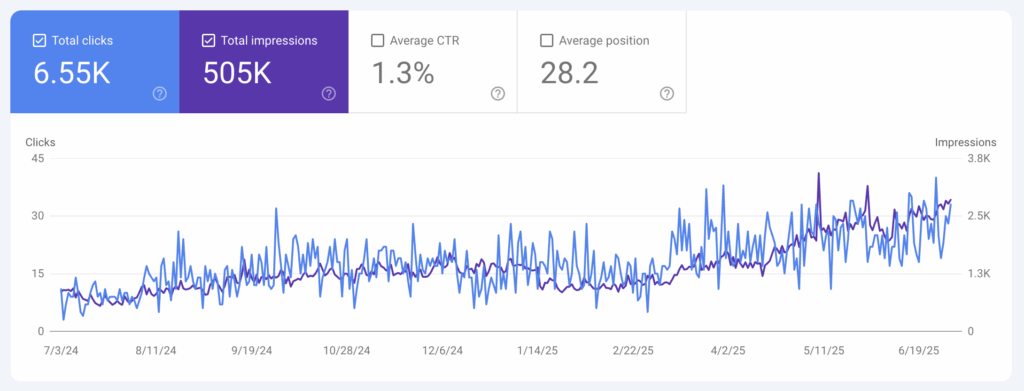
Launching a Website for Florists & Floral Designers
Just now getting a website together? Great! It’s a big (awesome!) step for any florist and floral designer to get their website up and running. But it’s really not just about slapping some photos online. To ensure your website’s success, make sure it’s optimized for search engines ideally before you launch it. If it’s already launched, that’s ok too! There’s no time like the present to get it going.
To launch an effective and visually stunning website, consider using Squarespace or Showit. These are the best platforms for florists and floral designers in terms of ease of use, ease to set up, functionality, and long-term growth potential. They have different pricing though, so be sure to choose the one that matches your financial situation!
Blogging Strategically
If you’re a florist or floral designer, building a strategic blog is like building multiple roads to your online home. But, unlike what you may have seen, it’s not just about showing off those incredibly gorgeous floral design photos.
A well-planned blog can do huge wonders in enhancing your SEO efforts. The trick? Writing for both potential clients and search engines like Google. Ignoring one or the other will lead to an unhappy florist or floral designing blog that no one reads – trust me, I’ve seen it time and time again.
What to Blog About
When it comes to what to blog about, you may be stumped. It can be a real brain-scratcher trying to come up with topics out of thin air, I totally get it. That’s why it’s best to first do some research into the things (related to flower arrangement, floral designing, weddings, funerals, events, interior design, etc.) that your specific potential customers are curious about.
To do this research, I recommend tools like Answer The Public, Ubersuggest, and AlsoAsked – all can be used free (with limitations, of course).
If spending hours going down this rabbit hole doesn’t sound appealing to you, we can take care of this research (plus prioritizing the most strategic, profitable topics) for you!
Infusing Keywords (Without Being Spammy!)
To start with, let’s think of your blog post title as the headline on a billboard. It needs to be eye-catching, but also contain relevant keywords to rank higher in search results.
Your main keyword should make its appearance early in the post – preferably within the first 100 words. Google prefers to see front-loaded blog posts, paying more attention to the first half of a blog post than the second half.
Each blog post itself should be sprinkled throughout with relevant, contextual keywords. For example, if you’re sharing tips on how to choose your floral colors for a wedding, you’d want to discuss color psychology, wedding themes, the seasons, and common mistakes you’ve seen.
The most important thing to remember here is that infusing keywords shouldn’t be spammy! That’s where a lot of florists and floral designers unfortunately go wrong in their blog posts. Google downvotes blog posts that appear spammy (i.e. are stuffed with keywords). If, when you’re reviewing the blog post, you keep saying the same thing over and over again or it’s just naturally sounding robot-y, go ahead and cut some keywords.
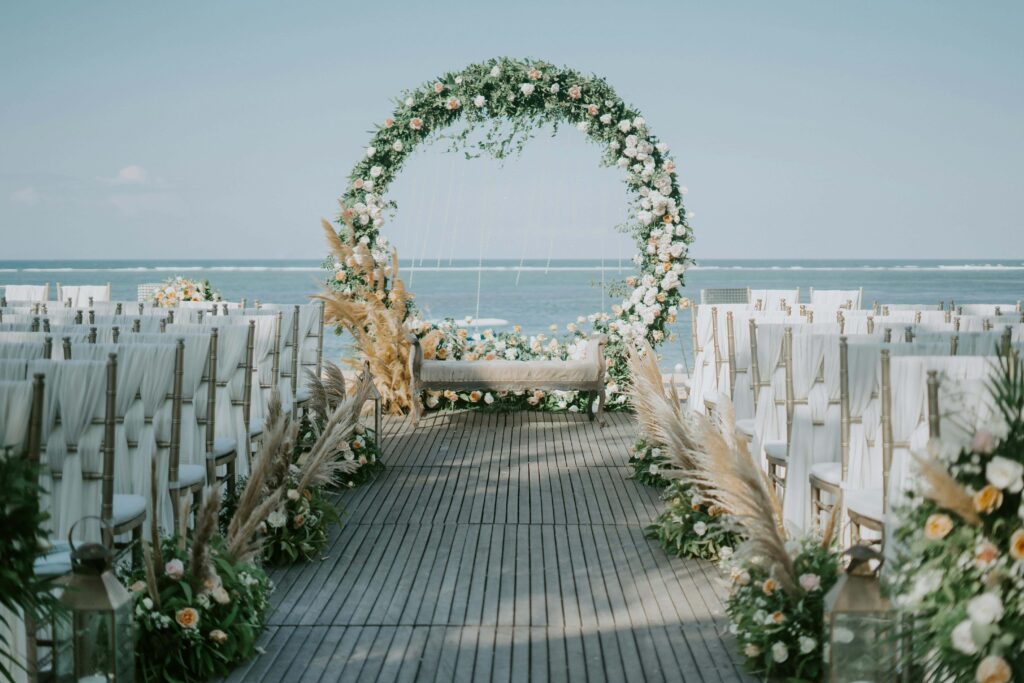
Optimizing Images
Image optimization plays a small, but helpful role. This involves naming images with descriptive keywords and writing alt-text that accurately describes them.
To optimize an image’s name, here’s the format you should follow:
pink-lilies-wedding-arch-autumn.jpg
To write optimized image’s alt-text, here’s the format you should follow:
An expertly designed gorgeous floral wedding arch in portland maine.
This makes sure search engines understand what each picture represents, increasing chances of popping up when potential clients hit up an image search as well as informing search engines how each image on a page relates to the page it’s on.
Engaging Locally for Florists & Floral Designers
Florists and floral designers can leverage local events to enhance their SEO efforts. It’s all about creating a buzz and becoming the go-to florist or floral designer in your city.
When you participate actively, it lets potential customers know that you’re not just any florist or floral designer, but one who is committed to being a treasured part of the community. Plus, Google loves seeing this type of engagement too.
You don’t need a big budget or tons of time either. Simple strategies like partnering with a funeral home, sponsoring a booth at a wedding-related event, or offering free mini flower arrangements at local fundraisers work wonders. You can also go even further and show up in spaces relevant to getting married where your ideal customers hang out, such as popular date night activities, stages of wedding planning, etc.
The key here is networking effectively and using events and other spaces as an opportunity to show up for your community and boost your online visibility. Hand out business cards with your business’s URL clearly printed on them so people can check out your portfolio when they get home.
Increasing E-E-A-T (Expertise, Experience, Authoritativeness, Trustworthiness)
For florists and floral designers aiming to rank higher in Google search results, increasing E-E-A-T is a crucial SEO goal. But exactly how can you build your online expertise and trustworthiness?
Everything we’ve already discussed naturally works to boost E-E-A-T. To recap, a good starting point is to use your floral or floral designer website as an outlet for showcasing real-life experience. For instance, sharing stories behind events you’ve crafted flowers for can offer valuable insights into the care and creativity that goes into each event you contribute to.
In addition to this storytelling approach on web pages and/or blog posts, offering practical advice like ‘how-to’ guides on floral designing for events helps position you as an authority in the field. It’s even better if these tips are based on personal experiences from your own business.
Last but not least, always remember: authenticity wins. So don’t shy away from showing both successes and challenges along the way – it makes you more relatable and trustworthy.
SEO isn’t just about attracting more eyes to your work – it’s about drawing the right ones; those potential customers who see and appreciate what makes you worth choosing among a dozen florists and floral designers. Remember: consistency is key! Keep optimizing, keep analyzing user behavior – watch as your organic traffic from Google grows!
Seren Nurgun
SEO pro and founder of SweetSea Digital, Seren has proudly generated over 278,000 organic clicks from Google and worked with awe-inspiring 6 and 7-figure business owners. Ethical, sustainable marketing is her jam.
Read These Next
Before you go any further…
Hi! I’m Seren, the writer!
Hi! I’m Seren, the writer!
An SEO pro since 2021, I’ve generated over 278,000 organic clicks from Google and worked with 6 and 7-figure business owners. Starting, running, and growing a business definitely isn’t the easiest thing you’ll ever do (to put it lightly), so this treasure trove of blog posts is purely focused on making your life that much easier. You’ve found one of my favorite places on the internet, so I won’t hold you any longer - happy reading!
But first!
Start your SEO journey on strong footing.
Benefit from the free Salt Your SEO guide, weekly newsletters with actionable tips, and some promotions you might not want to miss.
We’re not jerks! Your email will never be spammed, sold, or otherwise treated poorly.

FREE
GUIDE
A Boutique SEO Agency For Woman-Led Online & Local Businesses
A Boutique SEO Agency
For Woman-Led Online
& Local Businesses
who are ready to leverage the world’s
#1 search engine & make sales on repeat.
Navigate
Learn
Let's Connect
© 2021-2025 SWEETSEA DIGITAL, LLC
Brand Photography by Halle Alessia
SITE DESIGN BY CREATE & WANDER
Operating from the unceded ancestral homeland of the Tequesta people
Because we value your trust, we want to share that this page may contain unique affiliate links, which means that we may receive a financial exchange (at no cost to you) if you make a purchase. We only recommend the tools that we actually love and 100% ethically stand behind (because you deserve the best!).
